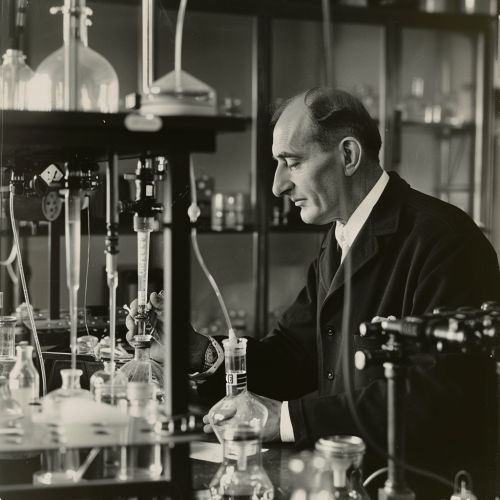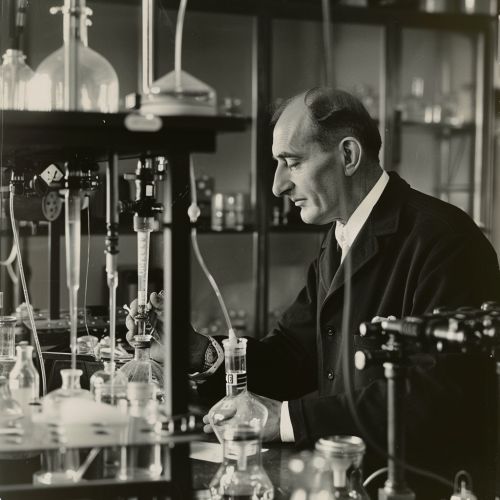Albert Hofmann: Difference between revisions
(Created page with "== Early Life and Education == Albert Hofmann was born on January 11, 1906, in Baden, Switzerland. He was the eldest of four children in a modest family. His father worked as a factory toolmaker. Hofmann's early education was marked by a keen interest in nature and the sciences, leading him to pursue higher education in chemistry at the University of Zurich. He completed his Ph.D. in 1929 under the supervision of Paul Karrer, a Nobel laureate in chemistry. Hofmann's doct...") |
No edit summary |
||
| Line 8: | Line 8: | ||
In 1938, while researching the medicinal potential of ergot alkaloids, Hofmann first synthesized lysergic acid diethylamide (LSD-25). However, the compound did not attract significant attention at the time, and it was shelved. Five years later, in April 1943, Hofmann decided to re-examine LSD-25. During this process, he accidentally absorbed a small amount through his skin and experienced the world's first LSD trip. Intrigued by the compound's psychoactive effects, Hofmann conducted a self-experiment three days later, ingesting 250 micrograms of LSD. This event, known as "Bicycle Day," marked the beginning of LSD's history as a powerful psychedelic substance. | In 1938, while researching the medicinal potential of ergot alkaloids, Hofmann first synthesized lysergic acid diethylamide (LSD-25). However, the compound did not attract significant attention at the time, and it was shelved. Five years later, in April 1943, Hofmann decided to re-examine LSD-25. During this process, he accidentally absorbed a small amount through his skin and experienced the world's first LSD trip. Intrigued by the compound's psychoactive effects, Hofmann conducted a self-experiment three days later, ingesting 250 micrograms of LSD. This event, known as "Bicycle Day," marked the beginning of LSD's history as a powerful psychedelic substance. | ||
[[Image:Detail-97369.jpg|thumb|center|Albert Hofmann working in his laboratory, surrounded by chemical apparatus and glassware.|class=only_on_mobile]] | |||
[[Image:Detail-97370.jpg|thumb|center|Albert Hofmann working in his laboratory, surrounded by chemical apparatus and glassware.|class=only_on_desktop]] | |||
=== Subsequent Research === | === Subsequent Research === | ||
Latest revision as of 19:16, 27 July 2024
Early Life and Education
Albert Hofmann was born on January 11, 1906, in Baden, Switzerland. He was the eldest of four children in a modest family. His father worked as a factory toolmaker. Hofmann's early education was marked by a keen interest in nature and the sciences, leading him to pursue higher education in chemistry at the University of Zurich. He completed his Ph.D. in 1929 under the supervision of Paul Karrer, a Nobel laureate in chemistry. Hofmann's doctoral research focused on the chemical structure of chitin, a polysaccharide found in the exoskeletons of insects and crustaceans.
Career at Sandoz
In 1929, Hofmann joined the pharmaceutical-chemical department of Sandoz Laboratories (now Novartis) in Basel, Switzerland. His initial work involved the isolation and synthesis of active compounds from medicinal plants. He was particularly interested in the ergot fungus, which led to his synthesis of various lysergic acid derivatives.
Discovery of LSD
In 1938, while researching the medicinal potential of ergot alkaloids, Hofmann first synthesized lysergic acid diethylamide (LSD-25). However, the compound did not attract significant attention at the time, and it was shelved. Five years later, in April 1943, Hofmann decided to re-examine LSD-25. During this process, he accidentally absorbed a small amount through his skin and experienced the world's first LSD trip. Intrigued by the compound's psychoactive effects, Hofmann conducted a self-experiment three days later, ingesting 250 micrograms of LSD. This event, known as "Bicycle Day," marked the beginning of LSD's history as a powerful psychedelic substance.


Subsequent Research
Following his discovery, Hofmann continued to explore the properties and potential applications of LSD. He collaborated with psychiatrists and psychologists to study its effects on the human mind. Hofmann's work contributed to the understanding of serotonin receptors and the role of neurotransmitters in mental health. He also investigated other psychoactive substances, including psilocybin, the active compound in psychedelic mushrooms, and synthesized it for the first time in 1958.
Contributions to Psychopharmacology
Hofmann's research extended beyond LSD. He played a significant role in the field of psychopharmacology, studying various natural and synthetic compounds. His work on ergot alkaloids led to the development of medications for migraines and postpartum hemorrhage. Hofmann's investigations into the psychoactive properties of plants like Salvia divinorum and morning glory seeds further expanded the understanding of naturally occurring hallucinogens.
Publications and Legacy
Hofmann authored numerous scientific papers and several books, including "LSD: My Problem Child," in which he detailed his experiences and the history of LSD. His work has had a lasting impact on both science and culture, influencing the fields of psychiatry, psychology, and neuroscience. Hofmann's discoveries also played a role in the countercultural movements of the 1960s, although he remained cautious about the non-medical use of psychedelics.
Later Life and Honors
Hofmann retired from Sandoz in 1971 but remained active in the scientific community. He received numerous awards and honors, including honorary doctorates from several universities. Hofmann was also a member of various scientific societies and continued to advocate for the responsible use of psychedelics in medicine and research.
Death
Albert Hofmann passed away on April 29, 2008, at the age of 102. His contributions to science and his discovery of LSD have left an indelible mark on the fields of chemistry, psychopharmacology, and mental health research.
